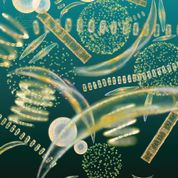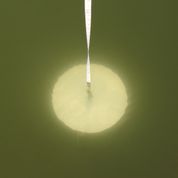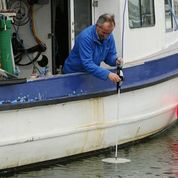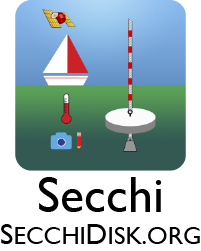The Project

This Citizen Science project was launched on the 21st February, 2013, and the idea came from a study by a team of Canadian marine biologists who reported that the phytoplankton in the oceans had declined by 40% since the 1950s due to climate change.


The Canadian scientist’s study provoked debate among many marine biologists however, as some thought they saw different results. Part of the controversy arises from the fact that the oceans are a vast place and there aren’t enough marine biologists to study them.
This is where you, the sailor, can help – by becoming a Citizen Scientist.
What does being a Citizen Scientist involve?

Taking part in this project is straightforward and simple.
When a seafaring citizen scientist is ready to use the app, the first step is to make a Secchi Disk (instructions are included). The small, white disk–made of plastic, wood or metal–is attached to a tape measure on one side and a weight on the other. You hold the tape measure and lower the disk vertically into the seawater, and as soon as it disappears from sight, you note the depth below the surface on the tape measure. This number, the “Secchi depth,” reflects the transparency of the water column, which is influenced by the number of particles present. The Secchi depth also tells scientists the depth to which light supports life in the water.
You use your smartphone and the Secchi app to obtain the GPS location and to enter the Secchi depth – a network connection isn’t required for this. It is very important that you use the Secchi app to obtain the GPS location when you measure the Secchi Depth. The Plymouth researchers receive the data as soon as you regain network connectivity. You can also upload photos and type in additional details like water temperature (measured by the boat) and notes on visual observations–say, a foamy surface, a plankton bloom or a flock of feeding sea birds. You can follow the data you collect, along with that of others, on the project’s website.
The app is named after the inventor of the measuring disk, Father Pietro Angelo Secchi, who used it to gauge the cloudiness of the Mediterranean in 1865.


It is hoped that sailors wanting to get involved will begin as soon as possible with the experiments and continue indefinitely with collecting data. The team expect the Secchi Disk study to run for many years to come to create the world’s biggest plankton survey. If enough data is generated (by just a small percentage of the world’s seafarers), it will form a unique global database on the productivity of the oceans and how they are being impacted by climate change.
You can find out more at the project’s website www.secchidisk.org which has some excellent tutorials.
No time like the present to start something for the future
Dr Richard Kirby, a Plankton Biologist and the Project’s leader explains; “Many of the datasets that scientists rely upon today to tell us about long-term changes are ‘citizen science’ studies that were begun a few decades ago. Often we look back and wish we had already started monitoring something about the natural world – “if only we had started measuring ‘x’ ten years ago”. Well, our view was there is no time like the present to start something for the future. This is why we created the Secchi App and this Citizen Science project, to try to encourage data collection on the plankton and make data submission simple.”
“One person recording a Secchi depth twice a month for a few years will generate useful data about their local sea,” Kirby says. “The more people that take part, the greater the project and the more important and valuable it will become to future generations.”








This year, the citizen Science Secchi Disk study (www.SecchiDisk.org) is celebrating entering its 10th year of engaging seafarers in citizen science by collecting phytoplankton data from the world’s oceans. The founder, plankton scientist Dr Richard Kirby’s goals for the long-term study were to captivate sailors in an overlooked world of life, for it to be enduring and for it to collect good phytoplankton data over a wide area to help address fundamental, scientific questions at a time of global and marine environmental change. Thanks to the participation of sailors, those goals are being met.
The Secchi Disk study is the world’s largest citizen science marine phytoplankton study and the data you collect can make a valuable contribution to science, as the latest publication from the Study in Nature Scientific Reports has shown [https://www.nature.com/articles/s41598-021-95029-z].
Dr Kirby told Noonsite, “The Secchi Disk study is so easy to take part in, so why not get involved on your next passage? All you need is to make a simple Secchi Disk and download the free Secchi mobile application app, and then you are all set to collect valuable in-situ data. It’s a study for all the family and it is especially, a great tool to get children interested in the unseen and often overlooked life that surrounds your yacht as you sail.
You can read more about the Secchi Disk study and other marine citizen science projects in a recent article in Yachting World – [https://www.yachtingworld.com/cruising/citizen-science-on-a-yacht-how-you-can-help-effect-change-139152] .